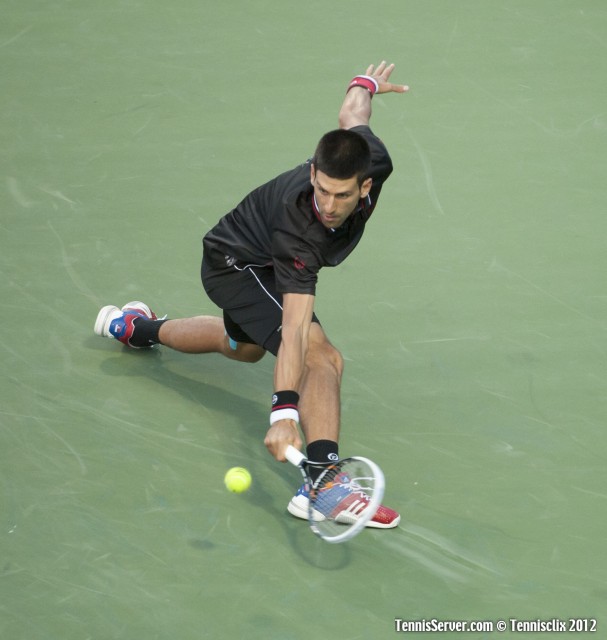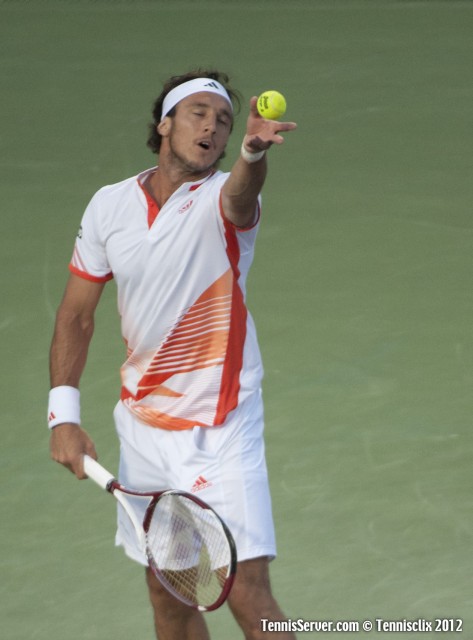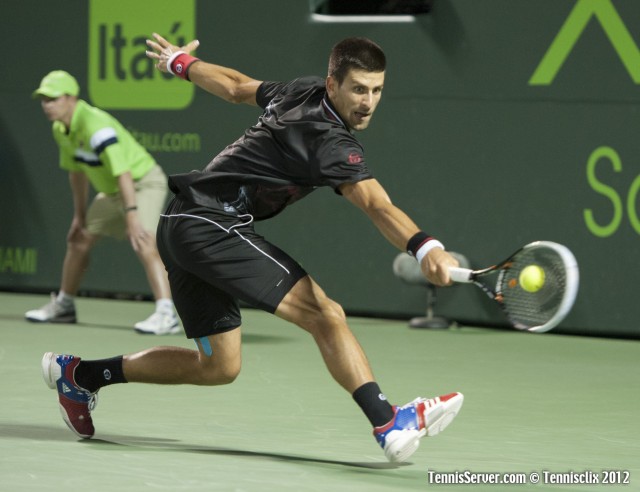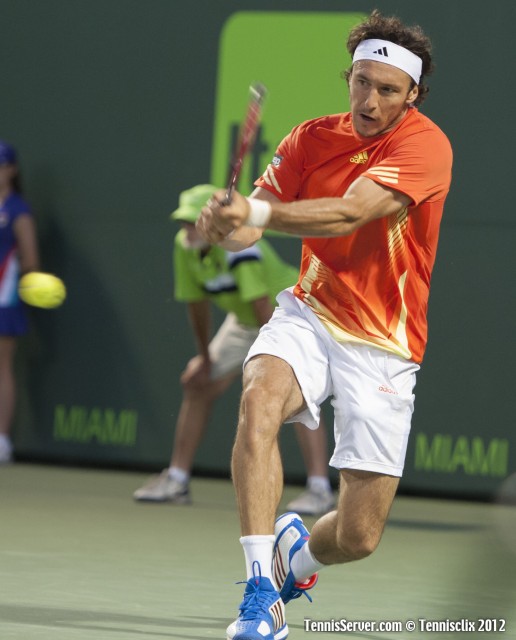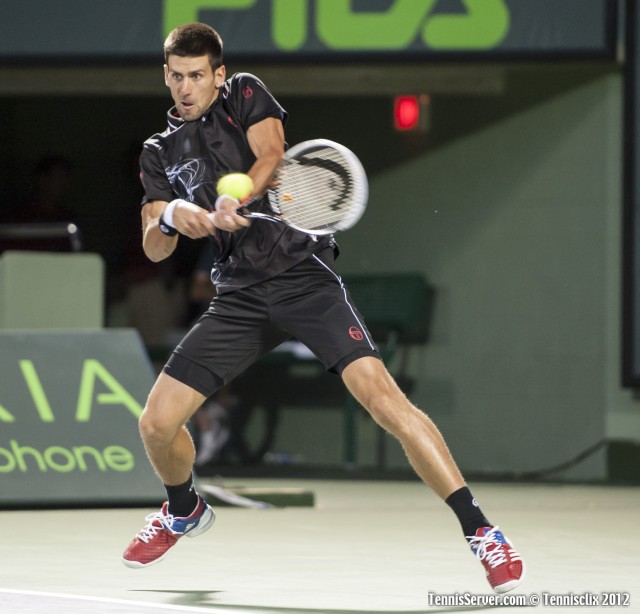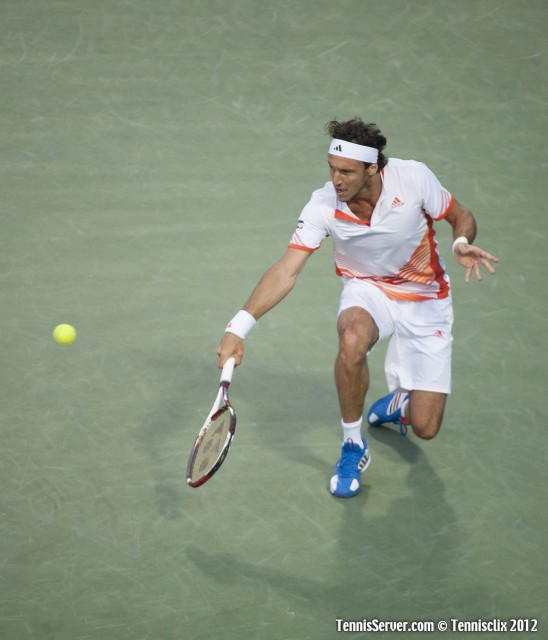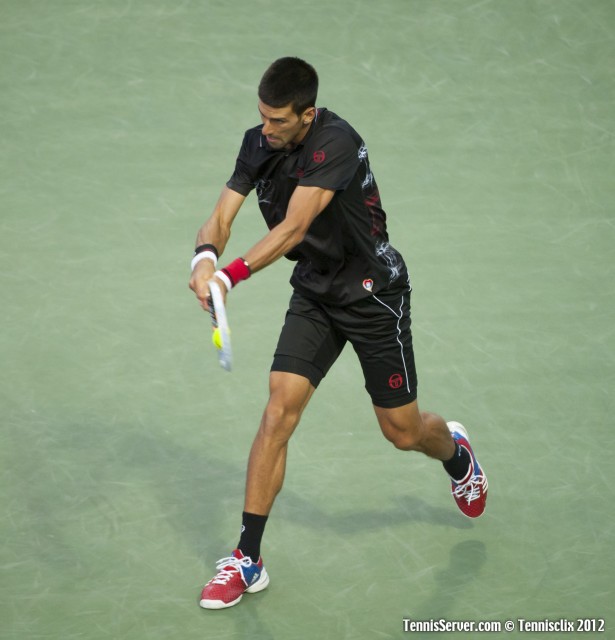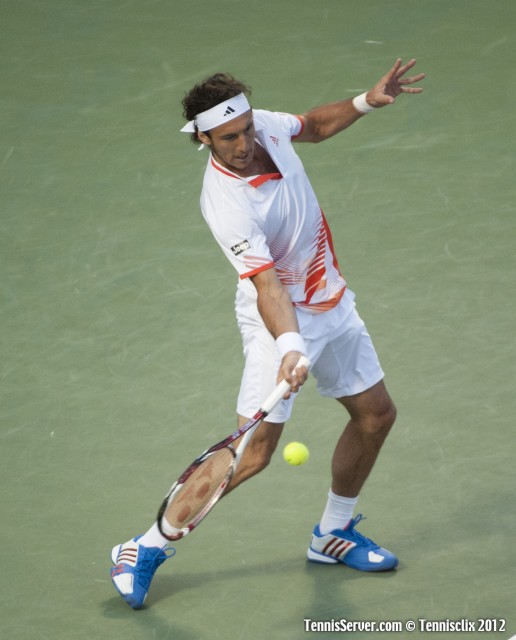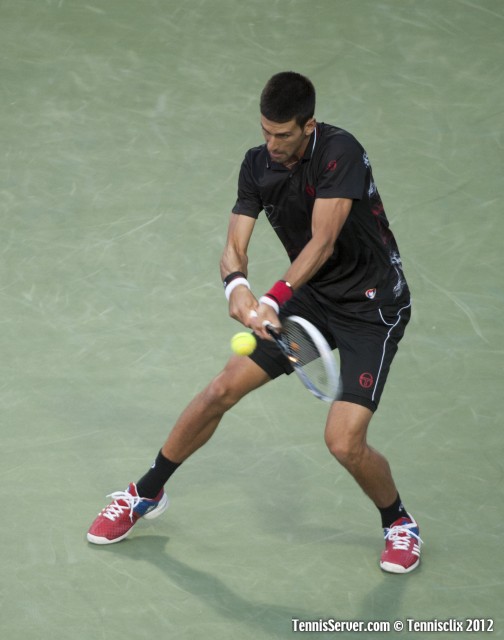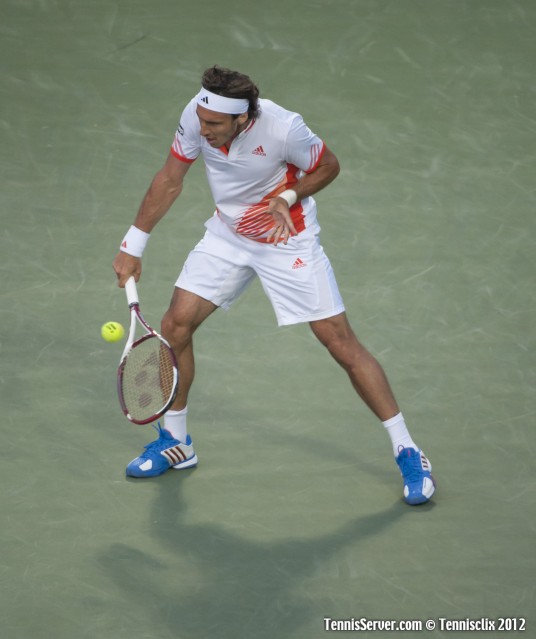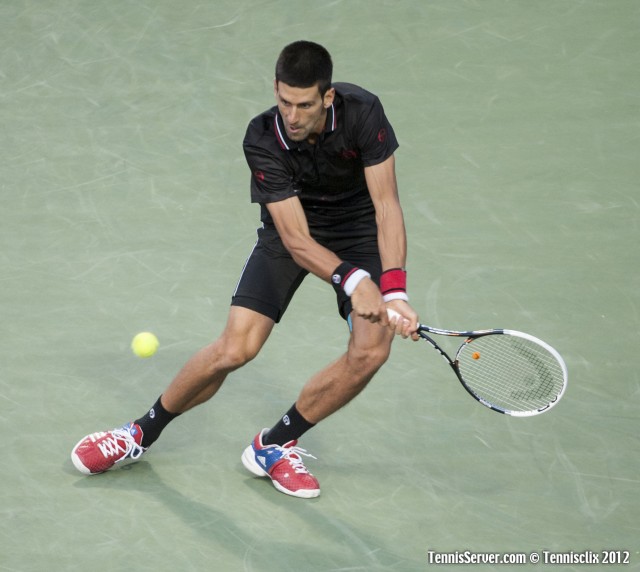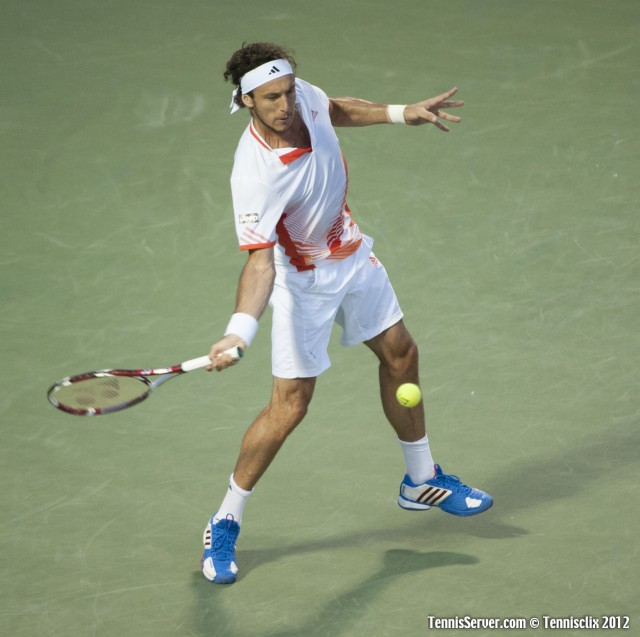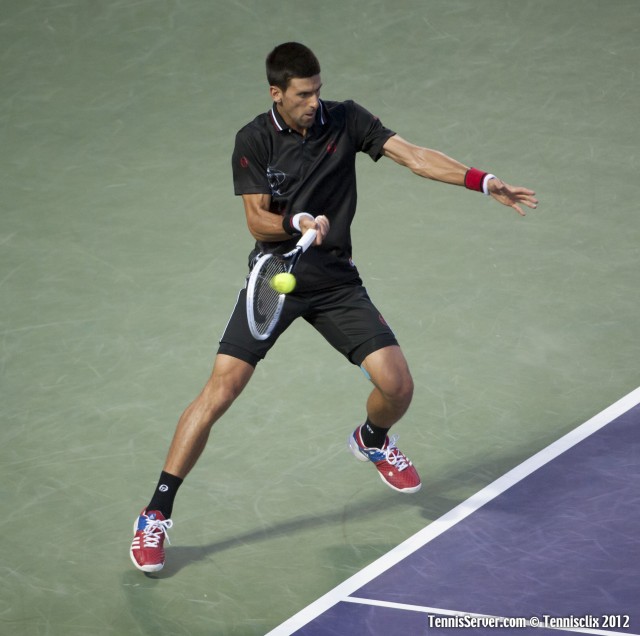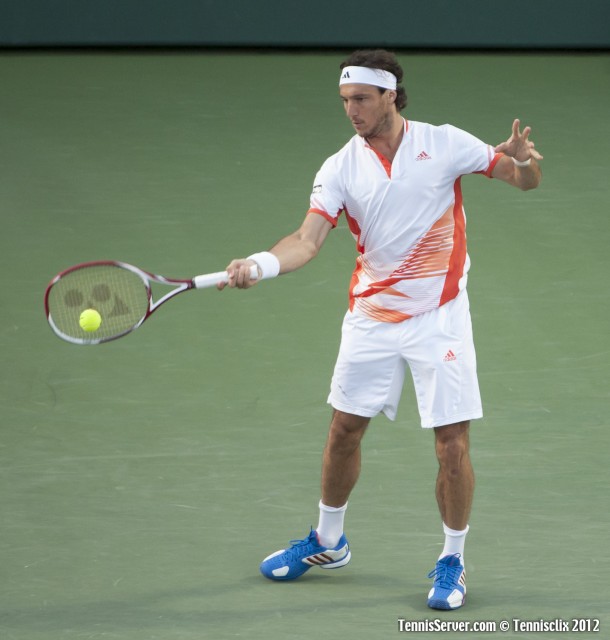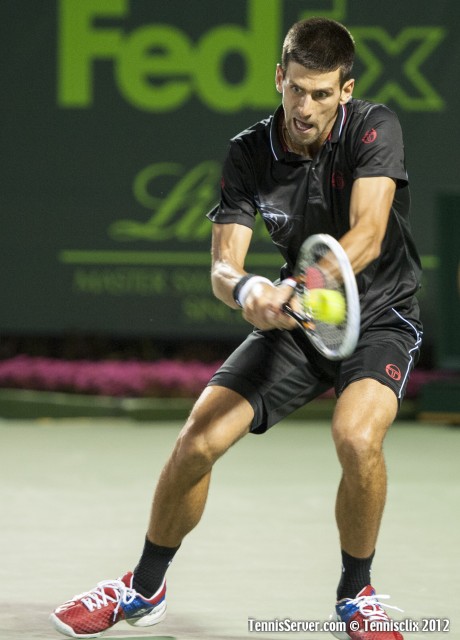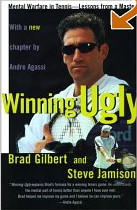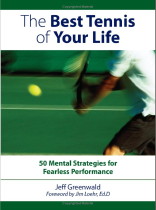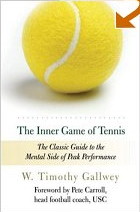Murray Walks To Final in Miami
March 30, 2012 -- Even with speculation on the rise earlier in the week about the shape of Rafael Nadal's left knee, no one saw this coming. But about an hour and a half before the semifinal was to begin between Nadal and Andy Murray, the tournament sent out a press release with a simple and direct message:, "Rafael Nadal has been forced to withdraw from the 2012 Sony Ericsson Open due to a knee injury. He will be available to the media at 2 p.m."
Peter Bodo, senior tennis editor with Tennis Magazine and Tennis.com, said he first heard about the withdrawal from Mary Carillo, according to a post on Twitter. "Weird vibes in the press room," he added.
"When I got told I sat down and looked at my phone," Andy Murray posted on his Twitter account. "And he messaged me to tell me that he wasn't going to play."
Because of the withdrawal four-seed Murray was awarded a walkover and, thus, moves on to Sunday's final against Djokovic, who advanced to the finals today with a 60 76(5) win over Juan Monaco. It will be Murray's second Sony Ericsson final. He won the tournament in 2009. Sunday will mark his 10th Masters 1000 final, where he holds a robust record of 8-1.
"I don't know how I'll feel," Murray responded on Twitter. "But I definitely will be fresh."
No journalist and certainly no fan wanted to hear the news of Rafa's withdrawal, during one of the major tournaments of the year. To fill the afternoon void, the tournament moved the women's doubles semifinal, which had been scheduled for 12:45 p.m., to Stadium Court at 3 p.m., when the men should have begun.
Nadal has allowed only two walkovers in his career out a total 777 tournament matches. The other came in 2004 at the Estoril Open in Portugal.
Nadal was honest and frank with the press. He expanded on the plight of his knee tendonitus, which has swirled around the athlete since Indian Wells. But it originally made news in 2009 at Roland Garros. That was the year Robin Soderling defeated the Spaniard in the fourth round as he tried for his fifth straight championship win. Nadal missed Wimbledon, too, where he would have defended his 2008 title.
"I am not ready to compete today. I am very sorry for the fans. I've very sorry for the tournament. I'm very sorry for everybody who were ready to watch the match on the television, for television, for everybody," Nadal said, with his arms wrapped around his waist. "I don't have pleasure. I cannot go on court and lie to everybody. That's the thing today."
On the rosy side, Nadal's knees are in better shape now than they were three years ago.
"The treatments worked fantastic," he began. "Even if today a really bad knee and last couple of days were tough for me, but positive thing the tendon improve a lot the last couple years. I am more health[y] with both tendons. For 2010 and 2011 I was able to compete with perfect conditions for almost all the year. So that's always fantastic when that's happening."
Inevitably Nadal was asked if his withdrawal today was a calculated move to save himself for the clay court season.
"So I am not thinking, 'I am not going on court today not because I have the clay-court season.' I am not going on court today because I cannot go on court today. Nothing about the clay-court season. I am not going on court today because I cannot go on court today. It is there in two weeks, but this tournament is very important for me, and I feel very sad to have to go out before a beautiful match for me, semifinals against Andy."
As far back as 2007, Nadal scrambled for relief from knee pain. At the U. S. Open that year he turned to Dr. Pier Francesco Parra, an Italian surgeon who had treated a bevy of athletes including Olympic Gold Medalist, Alberto Tomba, in 1988.
Dr. Parra described his treatment as arthroscopic surgery without cutting the skin, where the whole procedures takes about 23 seconds. Nadal continued to return to Parra throughout the Open.
As Nadal's schedule expanded and he rose in the rankings, the knee ailment turned chronic and tendon damage was noted. Nadal turned, then, to PRP -- Platelet rich plasma -- as a treatment choice other than traditional therapy or surgical procedures. His doctor, Mikel Sanchez, described PRP as a "miraculous regenerative treatment."
The treatment first entails extracting blood from a patient. The blood is then placed in a centrifuge, which spins and separates the platelets from the rest of the blood components, according to information from The Institute of Regenerative & Molecular Orthopaedics. The treated platelets are then re-injected in the affected area, where they release specially enhanced growth factors that help heal tissue.
Always the optimist, Nadal expects to see a doctor tomorrow and be back practicing in a few days.
"Hopefully in a few days, with a few days off and with the right treatment [PRP?], I will be in the right conditions to start to practice on the clay."
If Nadal is healthy and can return to the form that helped him earn six Roland Garros titles, he will vie for his seventh in May and perhaps break the all time record he holds alongside Bjorn Borg.


 You will join 13,000 other subscribers in receiving news of updates to the Tennis Server along with monthly tennis tips from tennis pro Tom Veneziano.
You will join 13,000 other subscribers in receiving news of updates to the Tennis Server along with monthly tennis tips from tennis pro Tom Veneziano. 
